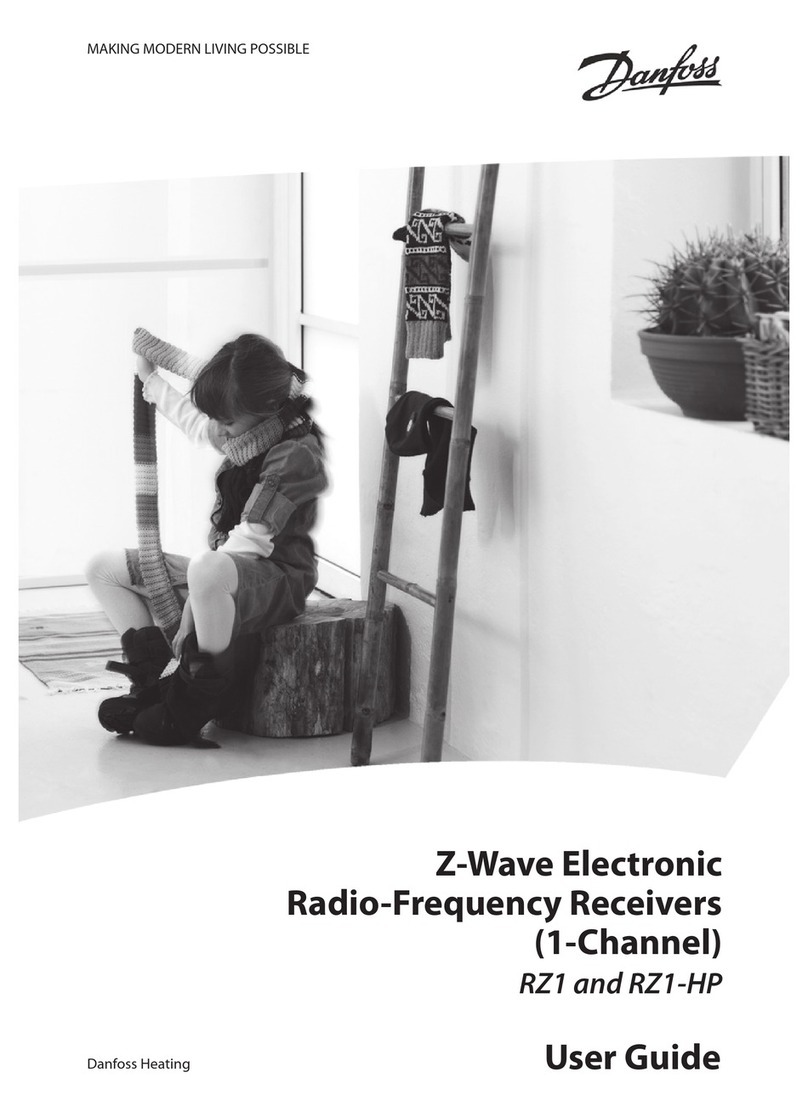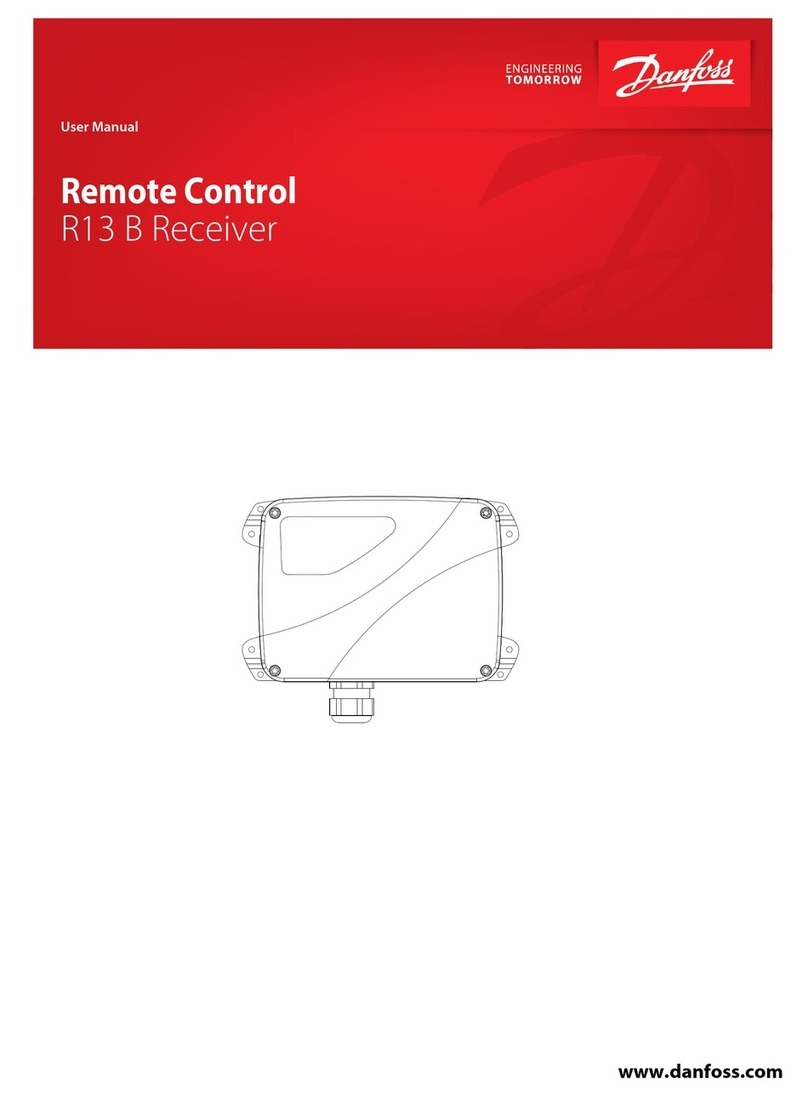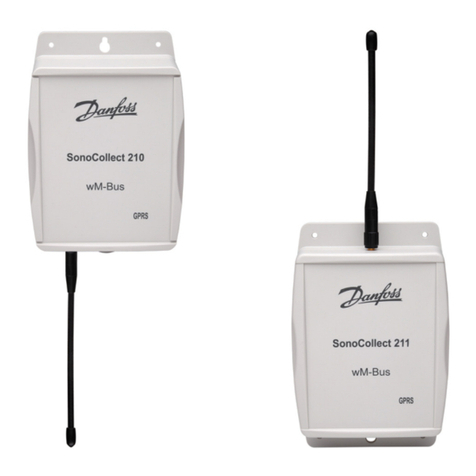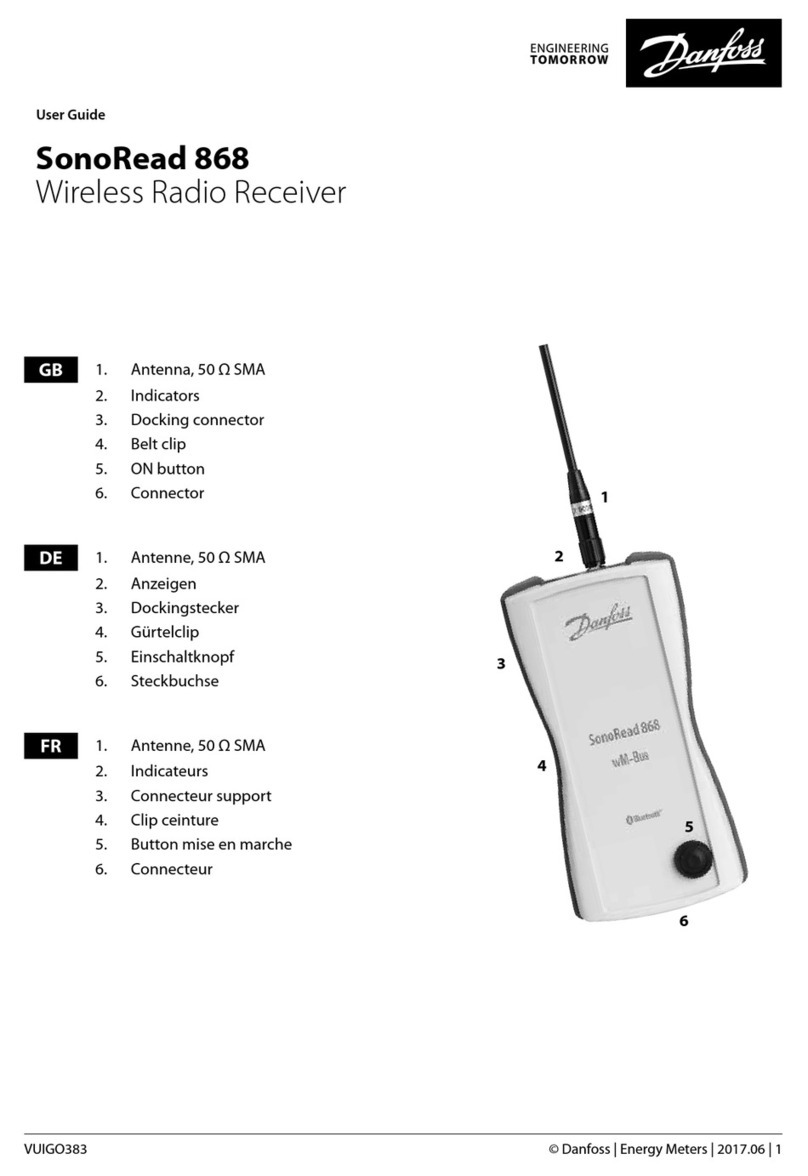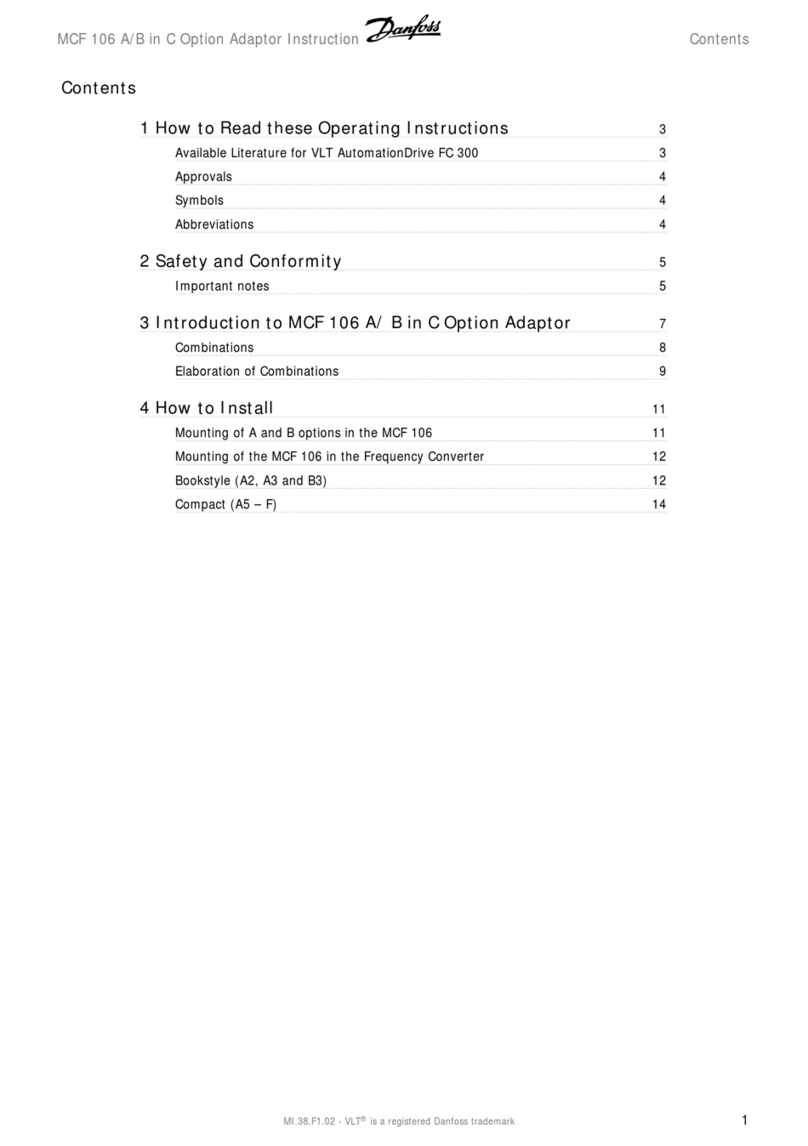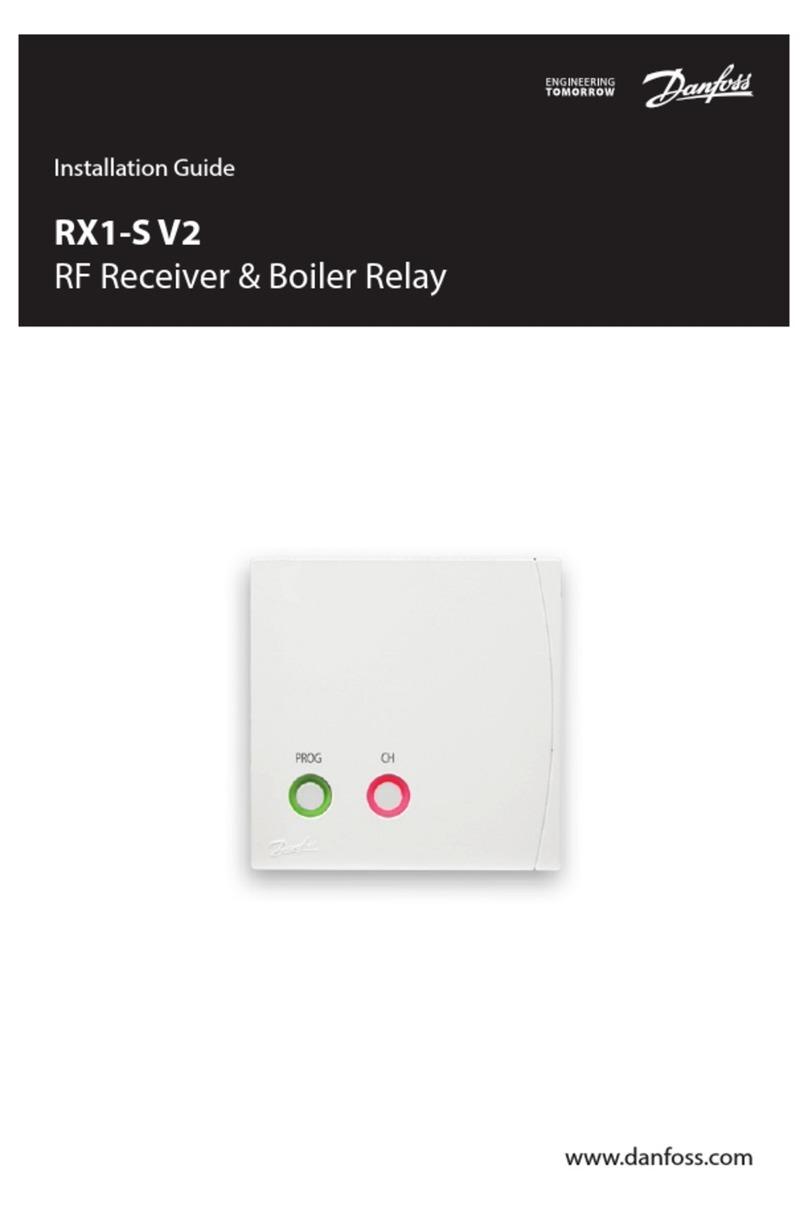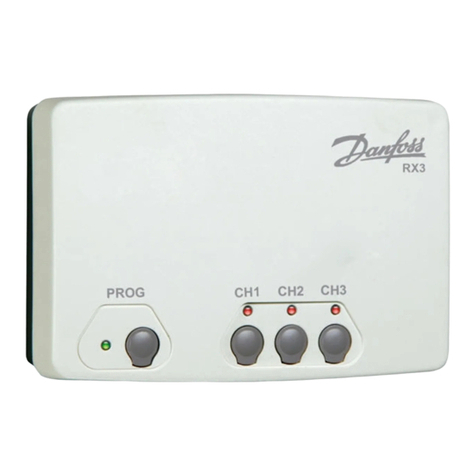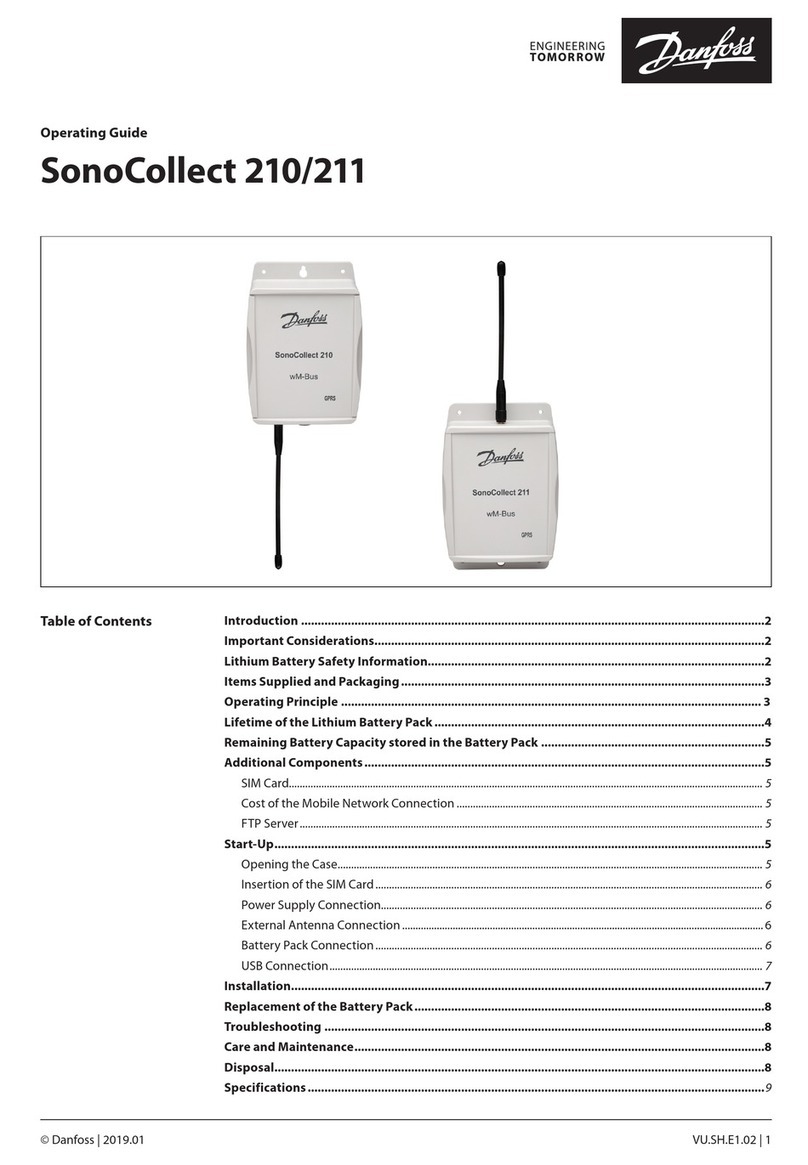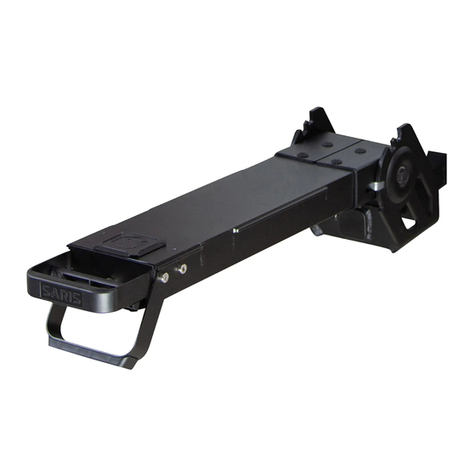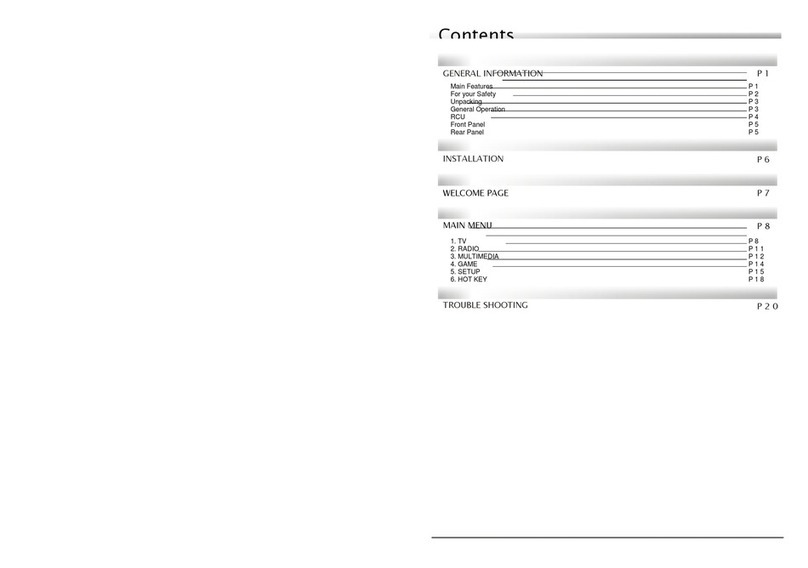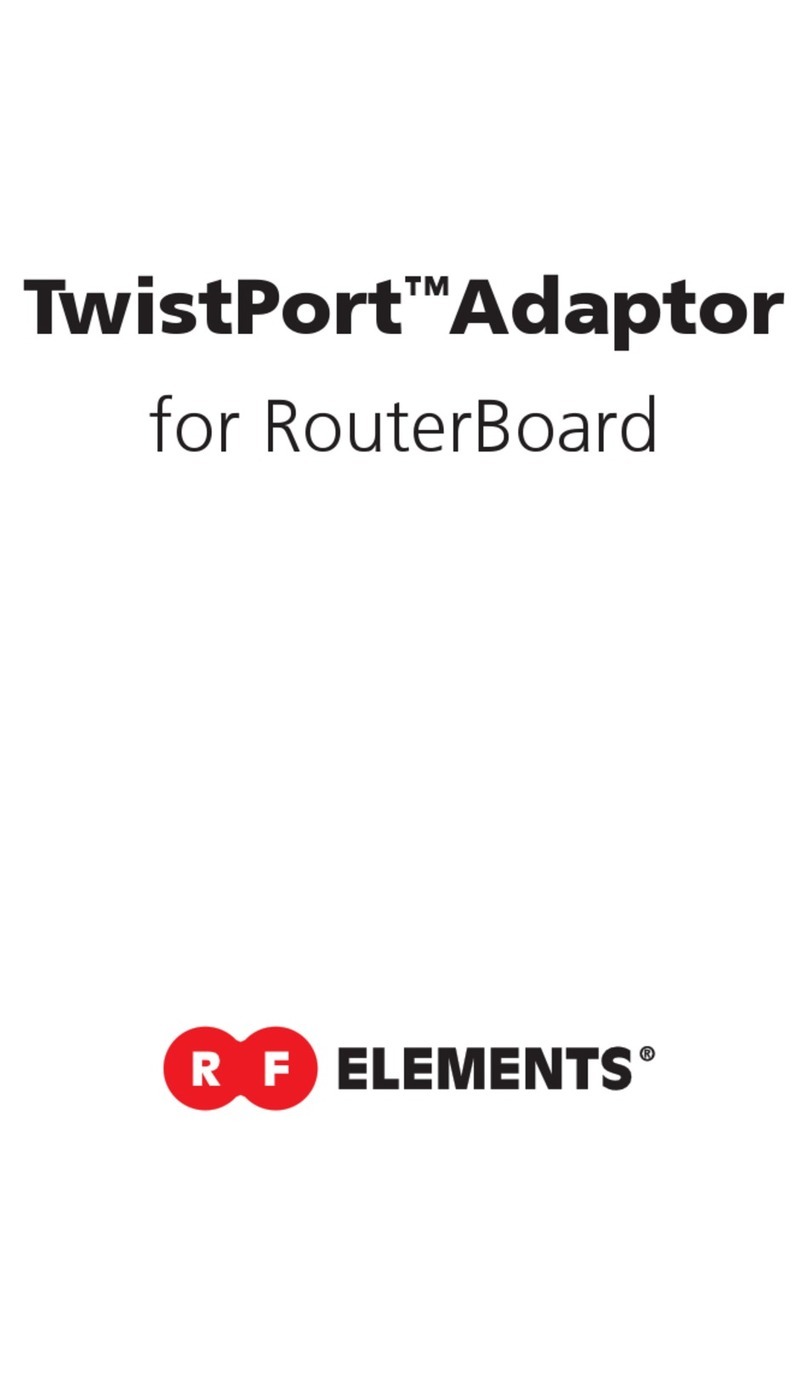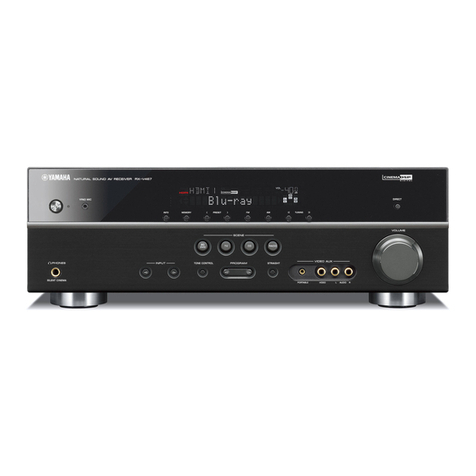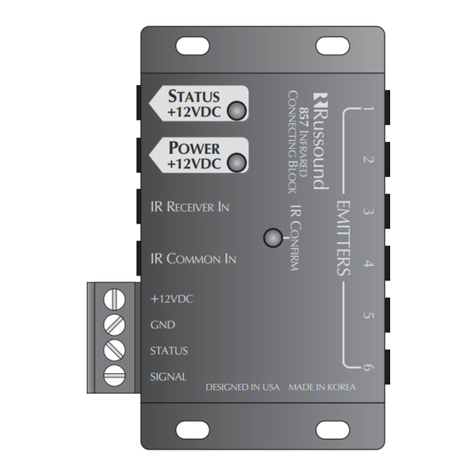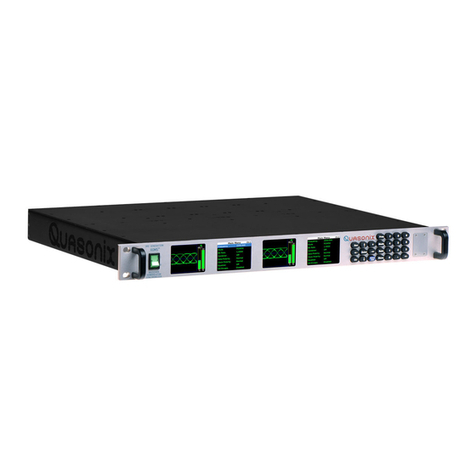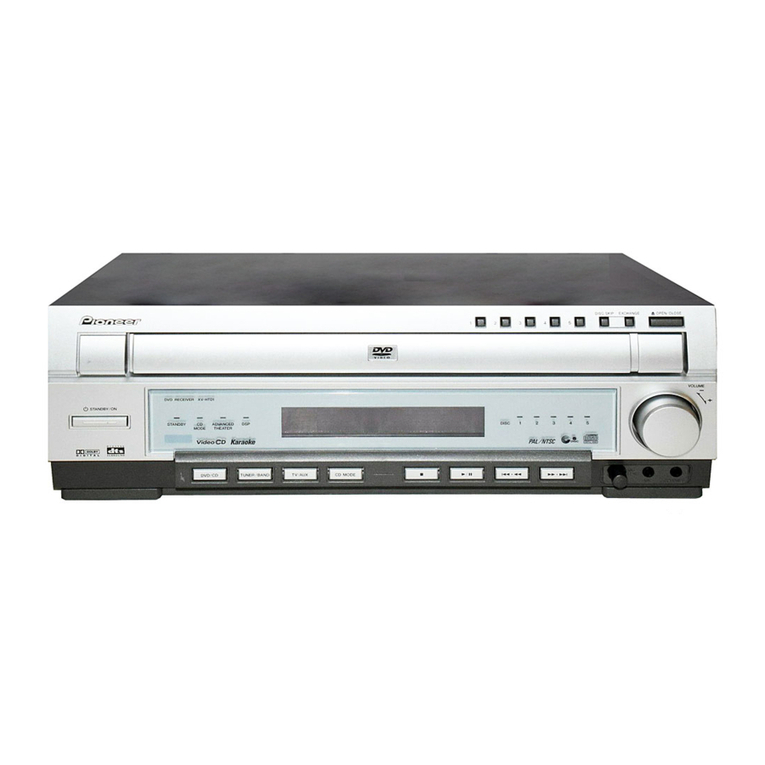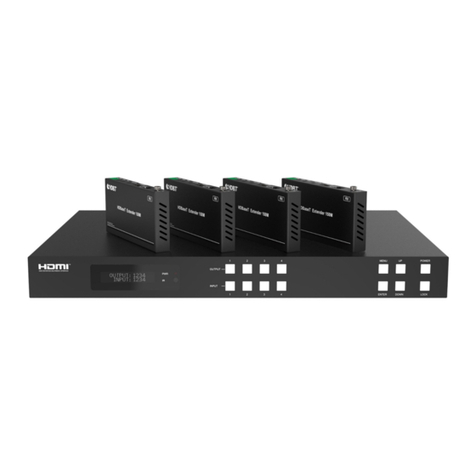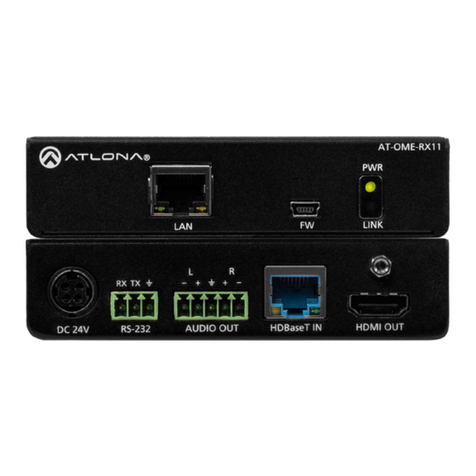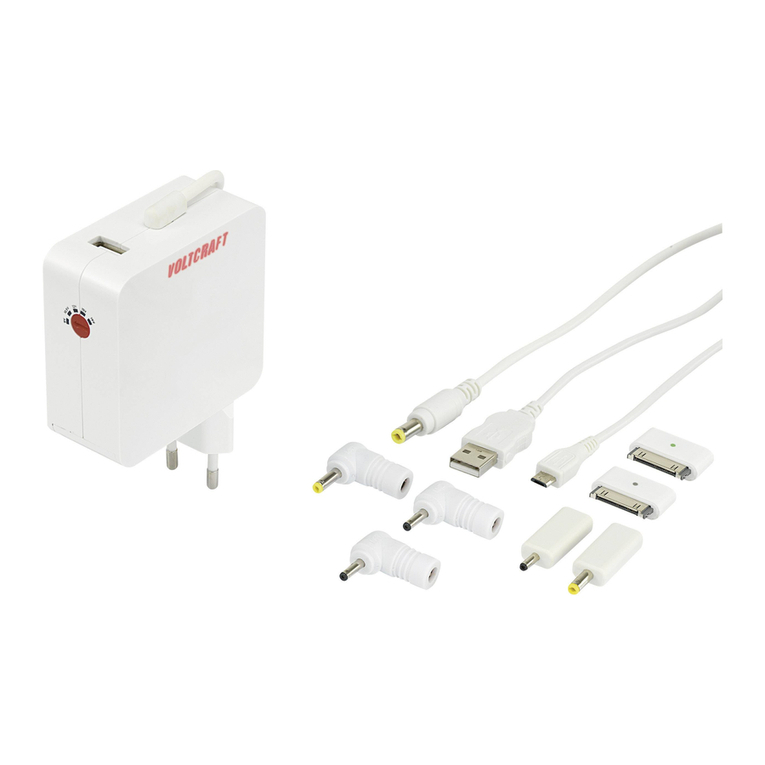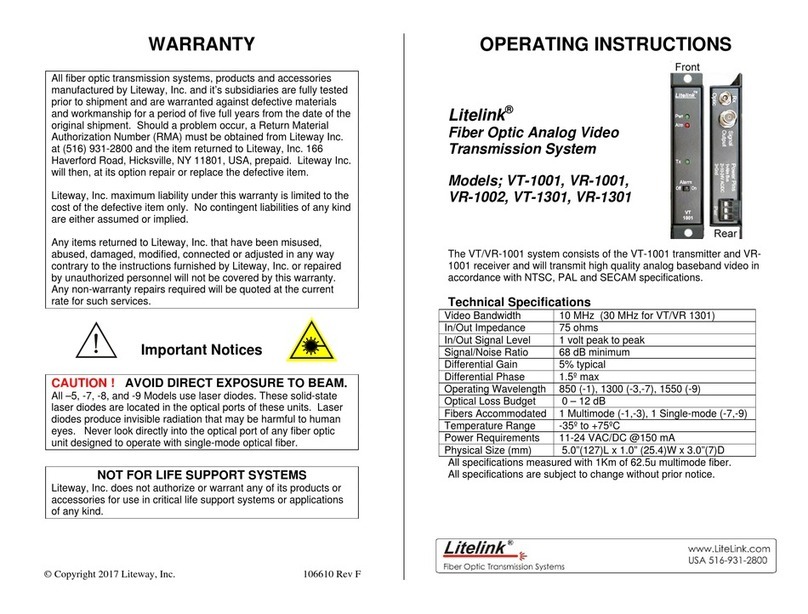
VUIGP102 © Danfoss | Energy Meters | 2017.09 9
User Manual SonoRead 868 Wireless Radio Receiver for meter reading
Antenna: Screw the antenna gently and without force onto the SMA antenna connector of the
device. It is possible to use other 868 MHz, 50 Ohm, SMA antennas like car roof mount-
ed antennas. However, there is no guaranty that other antennas might work as well
or work at all. The warranty is void if you are using other antennas, active antennas or
pre-amplifiers on the SonoRead 868 antenna connector. Pay especially attention not to
cause any static electric discharge on the antenna connector of the SonoRead 868.
On Button:
Press this button to switch the device on. The power on LED will light up in green. After
approximately 5 seconds the internal self-test has finished and the device is ready to
receive radio telegrams.
The device switches itself off, automatically, if there has not been a Bluetooth connec-
tion for more than 10 minutes.
By pressing the on button for more than 5 seconds, you may switch off the device
manually.
Connector: The battery charger connector is placed at the bottom side of the device.
Additionally, this connector contains the external serial interface. Therefore, it is not
possible to connect the battery charger and a serial interface device at the same time.
Power on LED:.
Power low LED:
Device is on (ON)
Low power warning (LOW)
The ON LED lights up in green if the device is switched on. If the battery power is low,
the red LOW LED lights up, also. In this case, the user should immediately connect the
battery charger. Approximately 4 minutes after the power low warning, the device is
switching itself off.
Charger
connected LED:
Battery
charging LED:
Charger is connected (CHRG)
Battery is charging (PWR)
The CHRG LED lights up in green if the battery charger is connected to the device. If
the device is charged the PWR LED stays on red. If the red PWR LED is switched off the
battery of the device is full. Due to the low self discharge rate of the lithium ion battery
it is not necessary to keep the battery charger connected.
Radio telegram
LED:
Valid radio telegram (OK)
Invalid radio telegram (ER)
The OK LED lights up if a valid radio telegram has been received. The ER LED lights up if
an invalid (corrupt) radio telegram has been received.
NOTE: If the ER LED and the LOW LED are flashing in red rapidly, the internal self-test
of the device has failed. Switch the device off and on again to see if the error
persists. If this is the case, you should turn it in for repair.
Bluetooth LED: (Flashing) Bluetooth connection (BLUE)
Bluetooth error (permanent on, not flashing, CONN)
The amber LED lights up some seconds after the device has been switched on. If there
is a permanent error in the Bluetooth module, the amber LED stays on permanently. In
this case, switch the device off and on again. If a Bluetooth connection is established
the green LED flashes.
